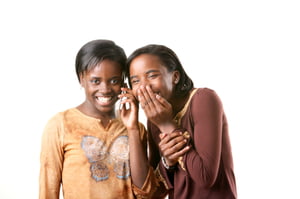Muslim wedding tradition
Muslim marriages are traditionally arranged by the groom’s family who selects the bride. The first Muslim wedding tradition, once the bride is chosen, is the Mangni. The Mangni is the engagement ceremony where rings are exchanged. The outfit worn by the bride-to-be at the Mangni is provided by the family of the groom.
Several days prior to the wedding, the Muslim wedding tradition Manjha takes place at the bride’s home. At this ceremony, the future bride is anointed with turmeric paste. Turmeric paste, sandalwood, and chameli oil is provided by the family of the groom. The chameli oil is applied to the bride by unmarried women only. The bride’s hands and feet are decorated with henna; and a spot of henna is painted on the groom as well. The bride is not permitted to leave the house between the Manja and her wedding day.
Like the outfit at the Mangni, the bride’s wedding day outfit is provided by the family of the groom. The bride will wear cherry red bridal robes.
The wedding takes place either indoors or in a large tent called a shamiana. Upon the groom’s arrival, he is greeted by the playing of music. The groom exchanges a glass of a sweetened drink called sharbet. They also exchange money. The sisters of the bride playfully hit the arriving guests with flower-wrapped sticks.
According to Muslim wedding tradition, men and women are kept separate during the ceremony. A curtain may be used, or they may remain in different rooms. The groom’s family must give an agreed-upon amount of money to the bride’s family. This dowry is called the meher. Both families elders agree on the amount.
The officiating priest reads from the Koran and asks the couple whether they agree to the arrangement and agree to be married to one another. The registration of the marriage is called nikaahnama; it is signed by the groom and two witnesses. The bride will sign it at some point in the future. After the groom signs the nikaahnama, visits the women to give gifts and money to the sisters of the bride. The bride’s oldest female relatives will give him blessings. The men and women remain separate during dinner; the groom’s family also remains segregated according to Muslim wedding tradition.
After dinner, the couple will sit together with a scarf covering their heads. They will recite prayers according to Muslim wedding tradition with the Koran placed between them. They must view each other only through the mirrors placed within the room.
The wedding night is spent with the bride and groom in separate quarters. The groom usually spends the night with a younger brother according to Muslim wedding tradition. The couple is finally escorted to their new home the following afternoon.
The bride’s father initiates the Muslim wedding tradition Rukhsat. It is a farewell where the bride’s father asks the for the groom’s promise to protect his daughter. When the bride arrives at her new home, she will enter first. The Koran is held over her head by her mother-in-law before the groom is allowed to enter.
The bride returns to her family home four days after the wedding. Her husband then retrieves her and her family and escorts them to the wedding reception at his parents’ home. This symbolizes the two families becoming one.




